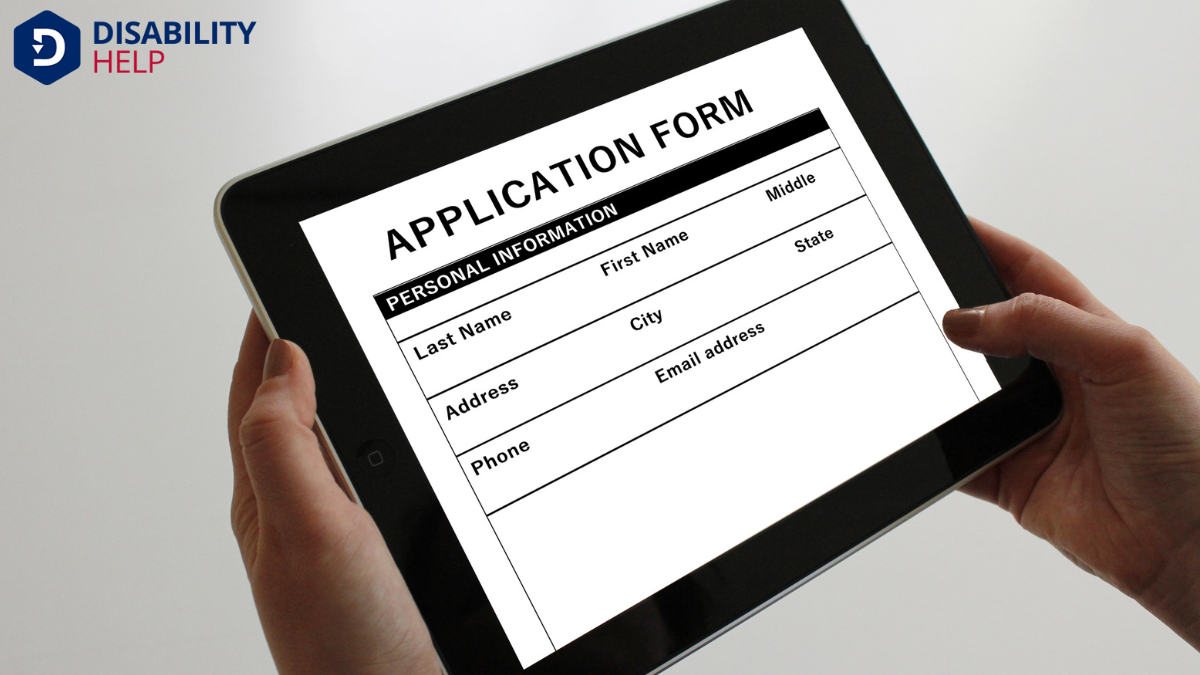Let's consider whether it's better to be on SSI or SSDI. While each program offers benefits based on different criteria, our choice ultimately hinges on individual circumstances. SSI might appeal to those with limited income, while SSDI often suits individuals with a solid work history. But beyond financial assistance, healthcare coverage and long-term planning also play vital roles. So, how do we decide which path aligns with our needs?
Key Takeaways
- SSDI typically offers higher payments based on work history, while SSI provides need-based assistance with generally lower benefits.
- SSI recipients usually qualify for MedicaidA U.S. government program that provides health coverage to eligible low-income individuals, includin..., offering broader coverage compared to MedicareA U.S. federal health insurance program for people aged 65 and older, and for some younger people wi... for SSDI beneficiaries after a 24-month wait.
- SSDI benefits depend on previous earnings, potentially providing more financial security than SSI's fixed payments.
- SSI supports financial need, ideal for those without sufficient work history, while SSDI suits individuals with a strong employment record.
- Both programs offer work incentivesPrograms or policies that encourage individuals with disabilities to enter or remain in the workforc..., but SSDI's Trial Work Period allows testing employment while maintaining benefits.
Understanding SSI: Eligibility and Benefits
Supplemental Security Income (SSI) is a federal program that provides financial assistance to individuals with limited income and resources who are elderly, blind, or disabled.
We recognize that maneuvering through these benefits can be overwhelming. To qualify for SSI, we must meet specific criteria, primarily focusing on financial need. Our income and resources should fall below defined limits set by the Social Security Administration.
The benefits include monthly payments intended to help cover basic needs such as food, clothing, and shelter. Importantly, SSI also guarantees access to Medicaid in most states, which can be an essential support for healthcare needs.
Exploring SSDI: Eligibility and Benefits

While traversing Social Security Disability Insurance (SSDI)A U.S. government program that provides financial assistance to individuals who are unable to work d... can seem complex, understanding its core eligibility and benefits is vital for making informed decisions. SSDI is designed for individuals who've worked and paid Social Security taxes. To qualify, we need a sufficient work history and a condition that meets the Social Security Administration's definition of disability.
It’s important to know that our benefits are based on average lifetime earnings, not financial need.
Once approved, we can receive monthly benefits, which may also extend to certain family members. Additionally, after two years of receiving SSDI, we become eligible for Medicare. This coverage helps with medical expenses, providing peace of mind.
Understanding these aspects empowers us to navigate SSDI confidently and maximize its advantages.
Comparing Financial Assistance: SSI vs. SSDI
When considering financial assistance options, it's vital to understand the differences between Supplemental Security Income (SSI) and Social Security Disability InsuranceA form of insurance that provides income to individuals who are unable to work due to a disability. (SSDI).
Both programs provide important support, but they cater to different needs. SSI is need-based, offering aid to those with limited income and resources, regardless of work history. In contrast, SSDI benefits are tied to our work history and contributions to Social Security.
SSI payments are generally lower than SSDI, as they're designed to meet basic living needs. On the other hand, SSDI payments are based on our previous earnings, often resulting in higher benefits.
Understanding these distinctions helps us determine which program aligns with our circumstances, ensuring we get the assistance we need. Let's make informed choices together.
Impact on Healthcare Coverage
When we consider the impact on healthcare coverage, the type of benefits we receive—SSI or SSDI—plays a critical role.
SSI typically qualifies us for Medicaid, which can offer different prescription drug coverage and access to specialists compared to Medicare, which generally accompanies SSDI.
Understanding these differences helps us make informed decisions about our healthcare needs.
Medicaid vs. Medicare
Maneuvering the differences between Medicaid and Medicare is essential when considering the impact on healthcare coverage for those on SSI or SSDI.
Medicaid typically covers SSI recipients, offering extensive benefits with lower out-of-pocket costs. This program is need-based and provides essential services like doctor visits, hospital stays, and more.
For those on SSDI, Medicare becomes accessible after a 24-month waiting period. Medicare, while thorough, often requires premiums, deductibles, and co-pays, which can add up. It's divided into parts: Part A (hospital insurance) and Part B (medical insurance).
Understanding which program we qualify for helps us plan our healthcare expenses better. Ultimately, knowing the coverage differences guarantees we make informed decisions and maintain access to necessary medical services.
Prescription Drug Coverage
While steering through healthcare options, understanding prescription drug coverage is vital for those on SSI or SSDI. Let’s break it down: if we’re on SSI, we often qualify for Medicaid, which usually covers prescription drugs at little to no cost.
On the other hand, SSDI recipients typically access Medicare, which offers prescription coverage through Medicare Part D. However, Part D requires choosing a plan and paying premiums, deductibles, and co-pays.
Navigating these options can be tricky, but it's important to guarantee our prescriptions are covered and affordable. If we need extra help, there’s the Medicare Extra Help program, which aids with Part D costs for those with limited income.
As we evaluate our choices, let’s consider our medication needs and financial situation.
Access to Specialists
Access to specialists can greatly influence our healthcare coverage decisions. When we choose between SSI and SSDI, understanding how each impacts access to specialists is vital.
SSDI beneficiaries typically qualify for Medicare after a 24-month waiting period. Medicare often provides wider access to specialists, allowing us to receive more thorough care.
On the other hand, SSI recipients usually qualify for Medicaid, where access can vary by state. Some states offer extensive coverage, while others might limit specialist options.
We must consider our specific health needs and how specialist access aligns with them. If specialized care is essential for managing our condition, SSDI might offer better support.
However, if Medicaid in our state offers sufficient specialist coverage, SSI could still be a viable choice.
Work Incentives and Program Interaction

When we think about work incentives, both SSI and SSDI offer unique benefits that can support employment.
SSI provides work incentives like the Ticket to Work program, which helps us shift into the workforce without losing benefits immediately.
On the other hand, SSDI lets us explore job opportunities while still receiving benefits through initiatives like the Trial Work Period.
SSI Work Incentives Explained
Although many people see Supplemental Security Income (SSI) as a lifeline, it can also serve as a stepping stone to greater financial independence through work incentives.
Let’s explore how these incentives can ease the progression to employment. The SSI program offers several work incentives that encourage beneficiaries to pursue work without immediately losing their benefits.
One key incentive is the Earned Income Exclusion, which allows us to keep more of our SSI by not counting the first $65 of earned income, plus half of the remaining earnings.
Additionally, the Student Earned Income Exclusion benefits those under 22 who regularly attend school.
SSDI and Employment Benefits
Why is understanding SSDI work incentives essential for those of us maneuvering employment while on disability benefitsFinancial assistance provided to individuals who are unable to work due to a disability, such as Soc...?
These incentives allow us to pursue work opportunities without immediately losing our benefits. The Trial Work Period (TWP) is a key element, letting us test our ability to work for nine months while still receiving full benefits.
After TWP, the Extended Period of Eligibility (EPE) offers a safety net for 36 months, where benefits continue if our earnings stay below a certain threshold.
The Ticket to Work programA U.S. Social Security Administration program that provides free employment services to help individ... provides employment support services to assist us in finding and maintaining jobs.
Understanding these incentives helps us make informed decisions, balancing work opportunities with the security that SSDI provides.
Let’s explore these options to maximize our benefits.
Considerations for Long-term Financial Planning
As we navigate the complexities of long-term financial planning, understanding the differences between SSI and SSDI is essential.
SSI, Supplemental Security Income, is a needs-based program, offering benefits to those with limited income and resources. In contrast, SSDI, Social Security Disability Insurance, is based on our work history and contributions to Social Security.
When planning for the future, we must consider the stability and growth potential of these benefits. SSDI might offer higher payments, which can be beneficial for covering living expenses over time. Additionally, SSDI recipients can sometimes access additional programs like Medicare sooner than those on SSI.
Factors Affecting Benefit Amounts
Understanding the factors affecting benefit amounts is essential for anyone considering SSI or SSDI. Let's explore these together.
For SSI, our benefit amount is determined by federal and state maximums, which can vary based on where we live. Our countable income and living arrangements also play a role.
With SSDI, our work history is significant. The benefit amount depends on our average lifetime earnings before our disability. Importantly, SSDI benefits may increase with cost-of-living adjustments.
In both programs, changes in income or living arrangements can impact what we receive. We must keep informed and report any changes promptly to avoid overpayments.
Understanding these factors helps us make informed decisions about which program may better support our financial needs.
Navigating the Application Process

Now that we've examined how benefit amounts are determined for both SSI and SSDI, let's tackle the application process.
First, we need to gather essential documents, like medical records and proof of income, to support our claims. It's vital to be thorough and accurate when completing the application to prevent delays.
We can apply for SSDI online through the Social Security Administration's website, which is straightforward and user-friendly. For SSI, since it considers financial need, we might've to visit a local Social Security office.
It’s advisable to follow up regularly to track our application’s progress. If we're overwhelmed, seeking assistance from a representative or advocate can make the process more manageable.
Together, we can navigate this efficiently.
Conclusion
In deciding whether SSI or SSDI is better for you, let's weigh the specifics of your situation. We should consider financial needs, work history, and healthcare requirements. While SSI might suit those with limited resources, SSDI could offer higher payments through your work history. Don't forget healthcare access—SSI often links to Medicaid, while SSDI connects to Medicare after a wait. Balancing these factors helps us choose the right path for your financial and health security.






